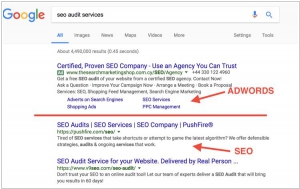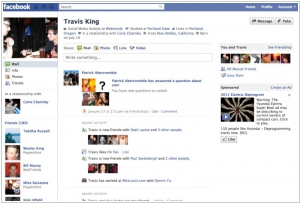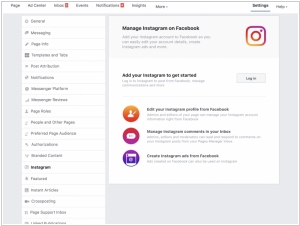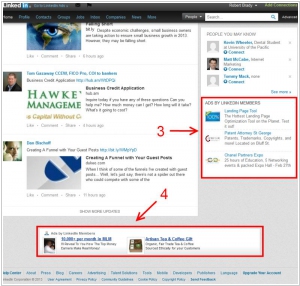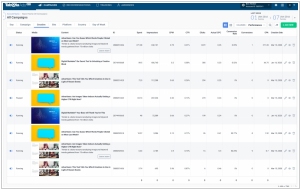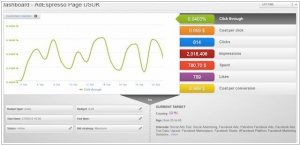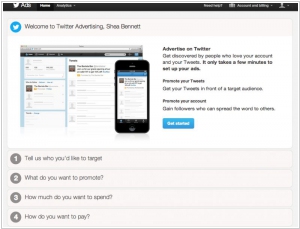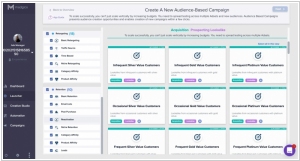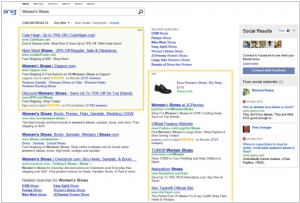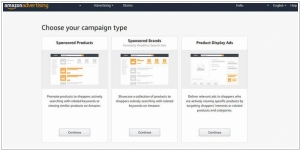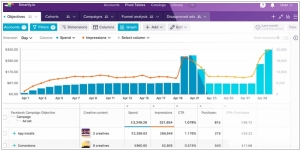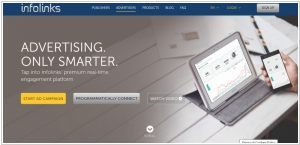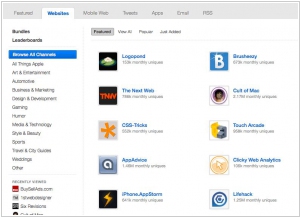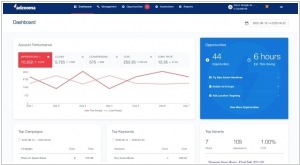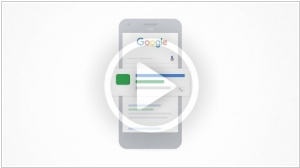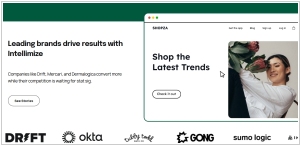Top 10 Online advertising services
February 03, 2024 | Editor: Sandeep Sharma
12
Online advertising services allow to publish ads in search engines, social networks and on websites that participate in various advertising networks.
1
Google Ads (former Adwords) is an online advertising service that places advertising copy at the top or bottom of, or beside, the list of results Google displays for a particular search query. The choice and placement of the ads is based in part on a proprietary determination of the relevance of the search query to the advertising copy.
2
Engage people where they're already engaged. On Facebook, you can target your ads to exactly the people you'd like to connect with. A powerful tool for managing your Facebooks Ads and sponsored stories. Monitor likes, click-through rates, impressions, reach and more.
3
With Instagram ads, businesses can drive awareness and increase its customer base through visuals. Learn how to advertise on Instagram and our ad formats.
4
Advertise on LinkedIn. Create an ad. Narrow your target audience by job function, geography, and more. Pay per click. Connect with the world's largest audience of active, influential professionals. Launch your campaign in minutes. All you need is a LinkedIn account.
5
Tell your brand story in a true-to-TikTok way with this sound-on, vertical video ad that can be further enhanced with interactive add-ons.
6
Taboola is an AI-powered content discovery platform that connects people with content on the web that suits their interests.
7
AdEspresso supports Facebook, Instagram and Google Ads campaign creation – creating all your campaigns in one place has never been so easy. One solution, all the advertising channels you need – less time spent switching from one Ads Manager to the other, more time making money.
8
Connect with the most receptive Twitter users at the most relevant moment with our Promoted Products. Build your community of vocal and motivated brand advocates quickly by reaching the Twitter users most likely to be interested in your brand. Deliver your message to non-followers and more of your existing followers with precision thanks to a range of targeting options.
9
Madgicx is an AI-backed omnichannel marketing platform with creative intelligence and autonomous ad buying capabilities that optimizes ads across Facebook and Google.
10
Microsoft Advertising enables to use Bing search engine marketing and audience solutions to help you build your business.
11
Amazon Advertising helps grow businesses and brands of all sizes. Its platform provides advanced tools for buying ad placements both on and off Amazon.
12
Smartly.io automates every step of social advertising, empowering teams to deliver beautifully effective brand experiences across social platforms.
13
Infolinks is one of the largest publisher marketplaces in the world. Infolinks’ real-time contextual intent targeting uses keywords to ensure that your ads reach an audience with an enthusiastic interest in your message.
14
BuySellAds.com is an online advertising network which operates one of the largest advertising marketplaces on the Web, selling well over 6 billion ad impressions each month. Our approach is unique, genuine, and transparent — that's why thousands of advertisers and publishers love doing business with us. It's just so easy.
15
Award-winning Ad platform helps optimise your Google, Microsoft and Facebook Ads in one place. Manage your local listings, reviews, SEO, website optimization, paid ads and marketing reports all in a single platform - to reduce your workload and deliver results faster.
Latest news about Online advertising services
2023. Meta debuts generative AI features for advertisers
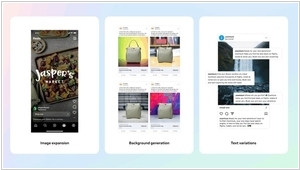
Meta is introducing its initial generative AI capabilities designed for advertisers. These features empower advertisers to employ AI for tasks such as crafting backgrounds, enlarging images, and generating multiple versions of ad text derived from their original content. These new offerings exemplify Meta's belief in the potential of generative AI to aid the brands and enterprises that contribute significantly to Meta's revenue stream. The first feature in this trio enables advertisers to personalize their creative assets by producing diverse backgrounds, transforming the appearance of their product images. This functionality is akin to Meta's consumer-oriented tool, Backdrop, which permits users to modify their image's setting or background through prompts. Another feature, image expansion, enables advertisers to adapt their assets to various aspect ratios needed for different products, such as Feed or Reels. Moreover, within Meta Ads Manager, the text variations feature utilizes AI to generate up to six distinct text versions based on the advertiser's original content.
2023. Twitter looks to bring advertisers back with expanded Ad features
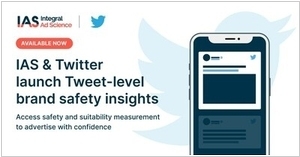
Twitter, now referred to as X, has revealed a new collaboration aimed at enhancing brand safety protocols for advertisers on the platform. This initiative follows a decline in ad revenue due to brands suspending advertising on X after their ads were displayed alongside Nazi content. In partnership with ad-tech company Integral Ad Science, X will introduce additional advertising tools designed to enable advertisers to effectively separate their content from undesirable keywords and handles, boasting a success rate of over 99%. Advertisers will have the flexibility to select standard or conservative sensitivity settings to filter out specific content types such as sexual content, targeted hate speech, obscenity, and drugs. Additionally, an automated blocklist feature will empower advertisers to prevent their brands from being associated with particular keywords on the "For You" and "Following" pages.
2020. LinkedIn introduces new retargeting tools
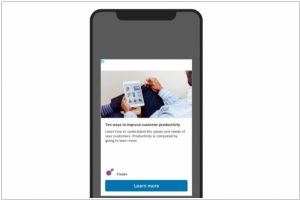
LinkedIn has introduced several exciting features for advertisers, including retargeting capabilities associated with video ads and lead-generation forms, along with brand safety integrations for the LinkedIn Audience Network. With the new retargeting functionality, advertisers can create and tailor ads to reach users who have viewed different percentages (25, 50, 75, or 100%) of their video ads. Moreover, they can target ads towards users who have interacted with Lead Gen Forms by either opening or submitting them. These enhancements provide advertisers with more precise targeting options and enable them to effectively engage with their desired audience on LinkedIn.
2020. Contextual advertising company GumGum raises $22M
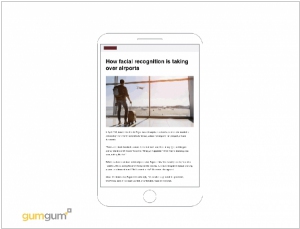
The contextual advertising firm, GumGum, recently secured $22 million in funding. GumGum specializes in computer vision technology, which enables the identification of image content and the placement of relevant advertisements alongside the pictures. This core business has served as the foundation for GumGum's expansion into other sectors, including sports sponsorships and in-video advertising. The in-video advertising unit has already undergone testing with brands like Sprint, and a wider launch is planned for the second quarter of the current year.
2019. Amazon launches sponsored display advertising
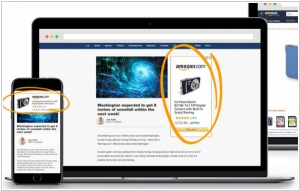
Amazon has recently introduced a new advertising campaign type called Sponsored Display, available for Vendors and professional Sellers on the platform. This new ad format fills a significant gap in Amazon's existing pay-per-click advertising offerings by enabling retargeting of Amazon shoppers. Retargeting is a highly sought-after feature, particularly for retail brands, and has long been available on display ad networks, Facebook, and Google. Previously, retargeting was accessible through Amazon's programmatic media solution, the Demand Side Platform (DSP). However, the DSP required substantial monthly spending and expert media management to effectively utilize the channel. The introduction of Sponsored Display now provides a more accessible option for advertisers to leverage retargeting capabilities on Amazon without the same level of investment or expertise required.
2019. Facebook unveiled automated ad builder and an appointment manager for small businesses
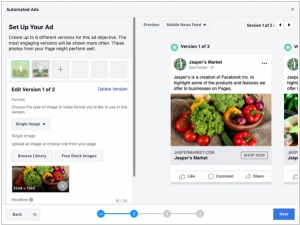
Facebook has introduced two new offerings specifically designed for small businesses. The first one is Automated Ads. With this feature, business owners can provide some information about their company and campaign objectives. Based on these details, along with data from their Facebook Page, Facebook will generate tailored recommendations on target audiences, budget allocation, and even suggest variations of the ad with suitable messaging. Additionally, Facebook is enhancing its existing appointment booking support on Messenger. Businesses can now seamlessly accept and manage appointments through Facebook and Instagram, streamlining the process. These appointments can be synchronized with the business owner's personal calendar or integrated with third-party appointment tools such as MyTime and HomeAdvisor.
2019. Bing Ads rebrands to Microsoft Advertising
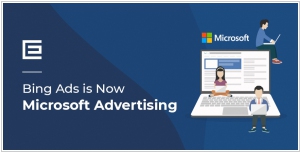
Bing Ads has undergone a rebranding and is now known as Microsoft Advertising. This change reflects the company's desire to indicate a broader range of offerings beyond search inventory and search data. In the announcement, Microsoft also emphasized its strong focus on personalization and artificial intelligence (AI). They have pledged to introduce additional advertising products that incorporate AI technology and are more closely integrated with users' data and businesses. It's worth noting that Bing will continue to serve as Microsoft's consumer search brand. The company firmly believes that Bing will become increasingly significant as intent data plays a crucial role in driving personalized experiences and product innovation, positioning it as a formidable competitor to Google.
2018. Adwords rebrands as Google Ads, adds AI for small business
In July, Google's ad service, AdWords, will undergo a transformation and be known as Google Ads. However, this change involves more than just a rebranding. Google is introducing a new feature called Smart Campaigns, which will serve as the default mode for advertisers. Smart Campaigns empower advertisers to specify the actions they prioritize, such as phone calls, store visits, or purchases. Leveraging machine learning, Google Ads will then optimize images, text, and targeting strategies to generate a higher volume of these desired actions. This enhancement aims to enhance advertisers' overall campaign performance and effectiveness.
2017. LinkedIn launched own advertising network
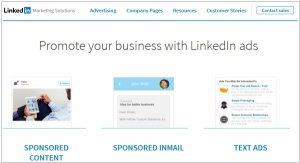
LinkedIn introduced LinkedIn Audience Network, a novel service enabling advertisers to purchase inventory on a network of mobile sites and apps outside of LinkedIn while leveraging LinkedIn's demographic data. This network enables the dissemination of Sponsored Content, which refers to updates posted by companies containing reports, links, or other promotional material that companies pay to promote. Initially, the LinkedIn Audience Network encompasses a wide array of global sites, apps, and ad exchanges including MoPub, Sharethrough, Google Ad Exchange, Rubicon, and Microsoft-owned services such as MSN.com and Outlook.com. The audience network will be launched first in all English-speaking countries and gradually expanded worldwide.
2016. Facebook tests ads in Groups
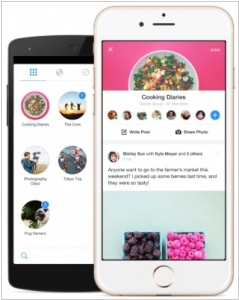
Facebook is set to introduce advertisements to its Groups feature, reaching its 1 billion user base. These ads will adopt the same appearance as News Feed ads and will be targeted based on both Group topics and standard identity-based targeting. The diverse range of purposes that Groups serve can significantly enhance the value of these ads. By effectively categorizing Groups and refining ad targeting, Facebook can deliver highly relevant and profitable ads to individuals with varied interests. For instance, if someone has indicated their affinity for the Manchester United football team by liking their Page, it suggests a likelihood of their interest in purchasing sports merchandise. This capability to target specific interest groups opens up opportunities for advertisers to reach their intended audience with precision and increase the effectiveness of their campaigns.
2016. Twitter invented sponsored stickers for brands
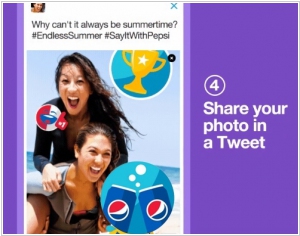
Twitter has introduced its first set of branded stickers, with Pepsi being the initial partner in an undisclosed agreement. This collaboration enables Twitter users to apply stickers created by the popular beverage company onto their photos. When users post these photos with the stickers, a hashtag associated with Pepsi appears within the tweet. This makes the tweet discoverable by Pepsi, potentially leading to further promotions or competitions. Simultaneously, this innovative approach helps promote the brand in a unique manner on Twitter. Brands have the opportunity to design sets of four or eight stickers, resembling accessories or other props, for users to incorporate into their own photos. When users share these photos adorned with the brand's stickers, they are visible to all of the user's followers. This enables brands to be showcased by their fans in an authentic and genuine way, offering a new dimension of exposure on Twitter.
2016. LinkedIn Ads allows advertisers to use their own data for targeting
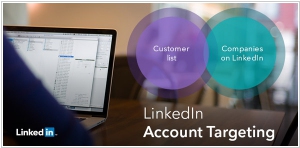
Advertisers on LinkedIn can now employ a new method to tailor their campaigns and focus on companies where they aim to generate sales. The introduction of LinkedIn Account Targeting allows businesses to provide their own list of sales accounts, which primarily consists of company profiles rather than individual user accounts. LinkedIn then cross-references this list with its extensive database of 8 million company pages on the platform. Subsequently, a user segment is created for precise ad targeting. Marketers have the flexibility to combine this feature with LinkedIn's existing targeting capabilities, enabling them to refine their campaigns by specific job titles in particular geographical locations, specifically targeting a select few thousand companies.
2015. Google Adwords will allow to target customers by email
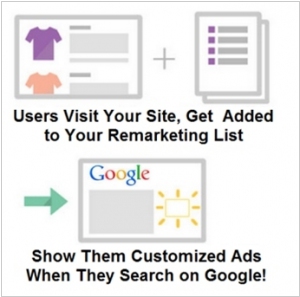
Google Customer Match introduces a fresh approach to connecting with your most valuable customers across Google Search, YouTube, and Gmail. This innovative product enables you to upload a list of email addresses, which are securely and privacy-consciously matched with signed-in Google users. Subsequently, you can create targeted campaigns and advertisements tailored to engage your specific audience. Users retain control over the ads they encounter, including Customer Match ads, by opting out of personalized ads or utilizing the options to mute or block ads from specific advertisers through Google Ads Settings. Additionally, Customer Match offers the opportunity to expand your customer base by showcasing ads to potential customers who share similar interests with your rewards members while they browse YouTube and Gmail.
2015. Twitter launched Mobile Ads Manager
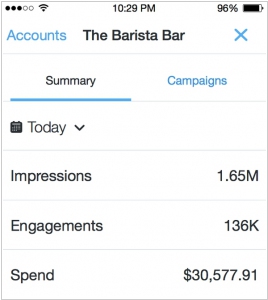
Twitter has officially introduced its new mobile Ads Manager, enabling users of Twitter's smartphone applications to monitor the performance of their ad campaigns while on the move. The Ads Manager provides valuable insights such as impressions, engagements, spend, cost per engagement, and engagement rate. Although the feature is designed for mobile usage, it does not currently support the creation of ad campaigns directly from smartphones. Instead, users are required to initiate their campaigns on the web using a desktop or laptop computer. This approach differs from Facebook's recent release of the dedicated Facebook Ads Manager App, which allows advertisers to both track the performance of existing campaigns and create new ones seamlessly using a mobile device.
2015. Google testing mobile ads with images
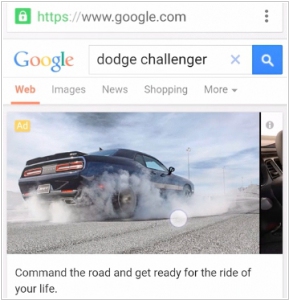
Google is introducing a change to its mobile phone Google Ads by replacing some of the text-only ads with visually enhanced photo versions. These new visual ads, currently available for car-related searches such as the Dodge Challenger, offer users the ability to browse through photos, gather product information, and make reservations directly from the search screen. This represents a significant departure from the text ads that tend to blend in with the overall search results. To cater to car buyers who are closer to making a purchase, Google is also providing franchise auto dealerships with improved location-based ads that include a click-to-call button and directions to their stores. A beta version of these ads is being made available this week. Brands that opt not to pay for the upgraded auto ads will still have the option to stick with the traditional text-only listings. While Google's mobile search results already display click-to-call phone numbers, directions, and occasional images for various business or product searches, these updates will offer companies greater opportunities to customize the user experience of their search results like never before.
2015. Facebook partners with IBM to make ads targeting easier for big brands
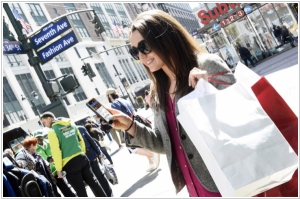
Facebook and IBM have jointly announced a collaboration that brings together their advertising tools and experts to assist large companies in tailoring their marketing strategies for customers. This partnership aims to enhance the relevance of ads presented to individuals. For instance, advertisers can leverage IBM's data to identify specific customer segments for targeted marketing campaigns through email and Facebook. Alternatively, a sports brand could collaborate with IBM and Facebook to deliver real-time Facebook ads to customers attending a game, leveraging IBM's location data. This collaboration enables both Facebook and IBM to strengthen their relationships with major advertisers. Additionally, it serves as an incentive for IBM's Fortune 500 clients to engage more closely with Facebook, which seeks to expand its advertising revenue. Simultaneously, IBM gains access to the vast amount of consumer data collected by Facebook, offering valuable insights for their marketing endeavors.
2015. Twitter Ads gets Google DoubleClick integration
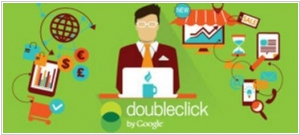
Twitter has announced a collaboration with DoubleClick's bid manager, allowing advertisers to streamline their ad buying process. Through this partnership, ad agencies and buyers can now conveniently purchase ad inventory on various websites, including Twitter Promoted Tweets, from a single interface. By enabling the purchase of Twitter ads through one of the world's most popular tools, Twitter aims to enhance its revenue generation, which is particularly crucial considering the recent missed revenue estimates. Additionally, Twitter aims to strengthen advertiser confidence in the effectiveness of its direct response commerce ads by working closely with DoubleClick to accurately measure the impact of clicks or actions on Twitter that lead to purchases or conversions. This upcoming program, set to launch later this year, will enable advertisers to attribute purchases to Twitter ads across platforms, irrespective of whether the ad views or purchases occurred on the web or mobile devices.
2015. LinkedIn expands its marketing platform with off-site ads
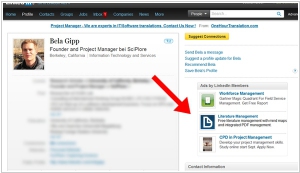
LinkedIn is introducing an enhanced version of its LinkedIn Ads platform, which now comprises five key components: LinkedIn Lead Accelerator, Sponsored Updates, LinkedIn Onsite Display, LinkedIn Network Display, and Sponsored InMail. The flagship feature, Lead Accelerator, enables businesses to segment their audiences and deliver targeted ads and content in a customized sequence for each group. Additionally, the new Display Network empowers advertisers to run campaigns on both LinkedIn and 2,500 publisher sites across the web. With these additions, LinkedIn now provides a comprehensive solution that caters to the entire sales funnel. It begins by attracting customers with On Site Display and Network Display ads, moves them through the funnel with Sponsored Updates and Sponsored InMail, and assists in the final stages of customer acquisition through the Lead Accelerator functionality.
2015. Facebook launched automated Product Ads
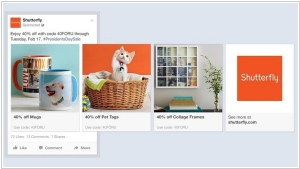
Facebook has introduced a new option called Product Ads, which comprises a suite of tools designed to enhance businesses' targeting capabilities on its platform, reaching its vast user base of approximately 1.4 billion individuals through an automated process. With Product Ads, businesses can upload their product catalogs to Facebook and either manually create ad campaigns or allow Facebook to automatically generate campaigns that target specific user segments. Facebook's automated approach leverages factors such as user interests, general location, and previous interactions with the advertiser's app or website to optimize ad performance. This feature is particularly advantageous for businesses with extensive inventories of appealing products, such as furniture chains or clothing franchises, as it increases the likelihood of users discovering and purchasing items.
2014. Facebook launches hyper-local ads
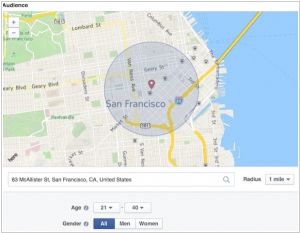
Facebook Ads has introduced a new hyper-local targeting feature aimed at enticing people to visit nearby stores and businesses. This update enables brick-and-mortar establishments to specifically target their ads towards individuals who either reside in or have recently been in close proximity to their stores. Advertisers have the flexibility to set a radius as small as a mile, and the ads will be displayed on users' mobile phones or web browsers. These Local Awareness ads will initially be available to business owners in the United States within the next few weeks, followed by a global rollout over the next several months. With over 1 billion mobile users on Facebook, a significant number of whom provide location access, along with desktop users who willingly share their current city or can be identified through IP addresses, the platform possesses extensive reach. Moreover, the recent introduction of the ambient proximity feature called Nearby Friends allows Facebook to access real-time location data from some users in the United States.
2014. Facebook takes on Google AdWords with Atlas
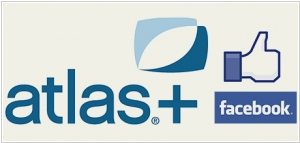
Facebook has recently launched a new advertising platform called Atlas that aims to target users on any website by utilizing their Facebook information. Atlas was acquired by Facebook from Microsoft last year. The platform is designed to rival Google's AdWords, enabling advertisers to display ads that track users across the web and mobile devices. Advertisers have the option to purchase ads on external websites and apps, with the choice of incorporating the Facebook social network. Instead of relying on cookies, Facebook will utilize the user's Facebook login details. While this move may not be well-received by Facebook users, it provides an alternative for advertisers and serves as competition to Google AdWords.
2014. BuySellAds acquires SaaS ad startup LaunchBit
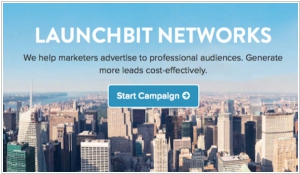
The Boston-based online advertising network, BuySellAds, has acquired LaunchBit, an advertising startup that specializes in assisting SaaS businesses in acquiring new customers. LaunchBit recently made a strategic shift towards lead generation, including email ads, which led to their collaboration with BuySellAds. Todd Garland, the founder of BuySellAds, expressed admiration for LaunchBit's performance-driven approach for advertisers and their ability to help publishers monetize the challenging medium of email. Currently, LaunchBit's ad network will continue to operate in its regular fashion, unaffected by the acquisition.
2014. Google Adwords allows to track which ads generate phone calls
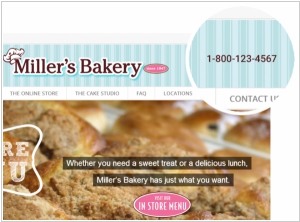
Google AdWords, the advertising platform, is introducing a new feature called Website Call Conversions, which enables the tracking of phone calls generated by ads. Here's how it operates: you create your usual search ads, but when someone clicks on them and visits your website, they will encounter a dynamically generated phone number associated with those specific ads. When potential customers click on the number or directly dial it from their phones, the call will automatically be linked to the original ad the customer viewed. This allows for easier tracking of which ads are driving phone calls. By analyzing the conversion data, advertisers can optimize their ads and bids to prioritize calls that are more likely to result in sales leads. To activate this feature, advertisers simply need to add a small code snippet to their desktop and mobile websites.
2014. Twitter launches Promoted Video ads
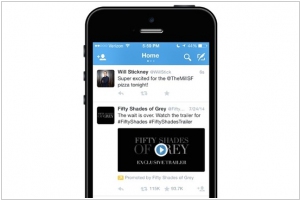
Twitter has commenced beta testing for a new feature called Promoted Video, designed specifically for brands seeking to upload and distribute their videos across the Twitter network. With this feature, advertisers will only incur charges when a user initiates video playback. Promoted Video builds upon the foundation of the Twitter Amplify program, which was previously geared towards prominent media companies such as ESPN, NFL, McDonald's, American Express, BBC, and Viacom, to name a few. Twitter acknowledges the immense popularity of videos on its platform, as evidenced by the positive engagement and increased views observed through the newer Twitter Video Card. In conjunction with the beta launch of Promoted Video, the company is also streamlining the campaign setup process for advertisers by introducing ads based on a Cost Per View (CPV) buying model.
2014. Adwords adds free dynamic sitelinks
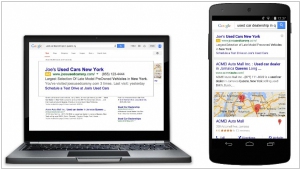
Google Adwords is introducing a worldwide rollout of dynamic sitelinks, which are automatically generated sitelinks displayed beneath your ad text. These dynamic sitelinks aim to enhance user experience by providing easier access to relevant pages on your website. According to Google, the inclusion of sitelinks improves ad relevance and the overall user experience after clicking on the ad. Notably, clicks on dynamic sitelinks are free of charge. However, advertisers will still incur charges for clicks on the ad headline and other ad extensions. Although dynamic sitelinks generally enhance ad performance, advertisers have the flexibility to disable them if desired.
2014. Bing Ads copies Google AdWords device targeting options
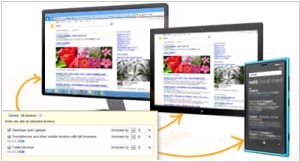
Bing Ads is introducing two modifications to its device targeting options. Firstly, it will merge PCs and tablets into a single device category, and secondly, it will discontinue mobile device targeting. These forthcoming changes have been motivated by users expressing their desire for Bing Ads to resemble AdWords to a greater extent. Although Bing Ads initially provided device targeting flexibility, it posed challenges for some users when managing cross-channel tools. Consequently, the update streamlines the targeting options available to advertisers, reducing them to two categories: desktop or mobile. The Bing Ads team assures that advertisers will still retain the ability to adjust their bids for tablets. Additionally, Bing will update the permissible bid modifiers for tablet targeting, with the allowable range for tablet bid modifiers from +300% to -20% starting in September.
2014. Facebook unveils Business Manager for marketers
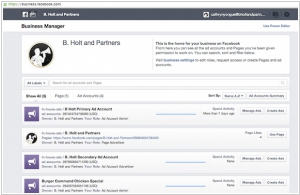
Facebook Business Manager is an innovative tool designed to empower marketers and agencies in effectively managing multiple campaigns through a unified interface. With this tool, you have the ability to grant access and assign roles to individuals involved in various campaigns, ensuring secure sharing of campaign materials. Moreover, Business Manager allows marketers to effortlessly add or remove ad accounts associated with a company and control permissions granted to individuals using those accounts. Additionally, the tool offers streamlined workflows that facilitate the separation of personal and business experiences on Facebook. Users can conveniently utilize their Facebook Login credentials to access ad accounts and Pages without the requirement of being friends with others for access privileges.
2014. LinkedIn now allows to target Ads and posts by language
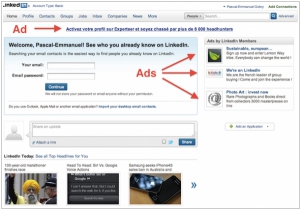
Marketers located outside the United States can now seize the opportunity to target LinkedIn Ads based on language preferences, allowing them to display ads exclusively to their native audience. Additionally, companies now have the ability to specify the target audience for each post in their feed, enabling them to tailor updates or ads for different user segments. This means that a company can share a post specifically with members in the United States, while sharing a distinct post with Brazilian users. Previously, when users visited a company's page, they would encounter all posts from that company, regardless of relevance or language. The introduction of these new geo-targeting tools is a logical step for LinkedIn, considering its extensive international user base. With the majority of the 3.5 million companies having company pages on LinkedIn located outside the US, this feature enhancement is highly relevant. It is worth noting that Facebook has been offering geo-targeted ads for several years.
2013. Google+ is not for ads. Ads are for Google+
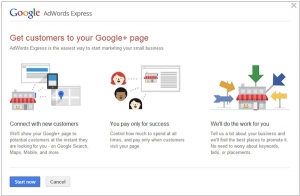
Google has yet to incorporate advertisements into its social network, Google+. Unlike Facebook, you cannot promote posts or purchase sidebar ads on this platform. But why is that? After all, Google is the advertising powerhouse with millions of advertisers ready to spend. The reason is that for the past two years, Google has been attempting to attract users from Facebook, and it doesn't want to discourage them with intrusive ads. However, Google has come up with a solution. They have decided to introduce an ad service specifically for Google+. This service allows any post or Hangout to be transformed into an ad block. These blocks will not be displayed on Google+ itself but rather on external sites within Google's advertising network, known as Adsense. This block will act as a window to Google+ on the third-party site, enticing users not only to the promoted post but also to explore Google's social network. Currently, this advertising service on Google+ is only available to major brands like Toyota. Interestingly, about a year ago, Google came close to launching a conventional ad service for Google+. They even briefly published a corresponding page. However, they eventually had a change of heart and removed the page.

